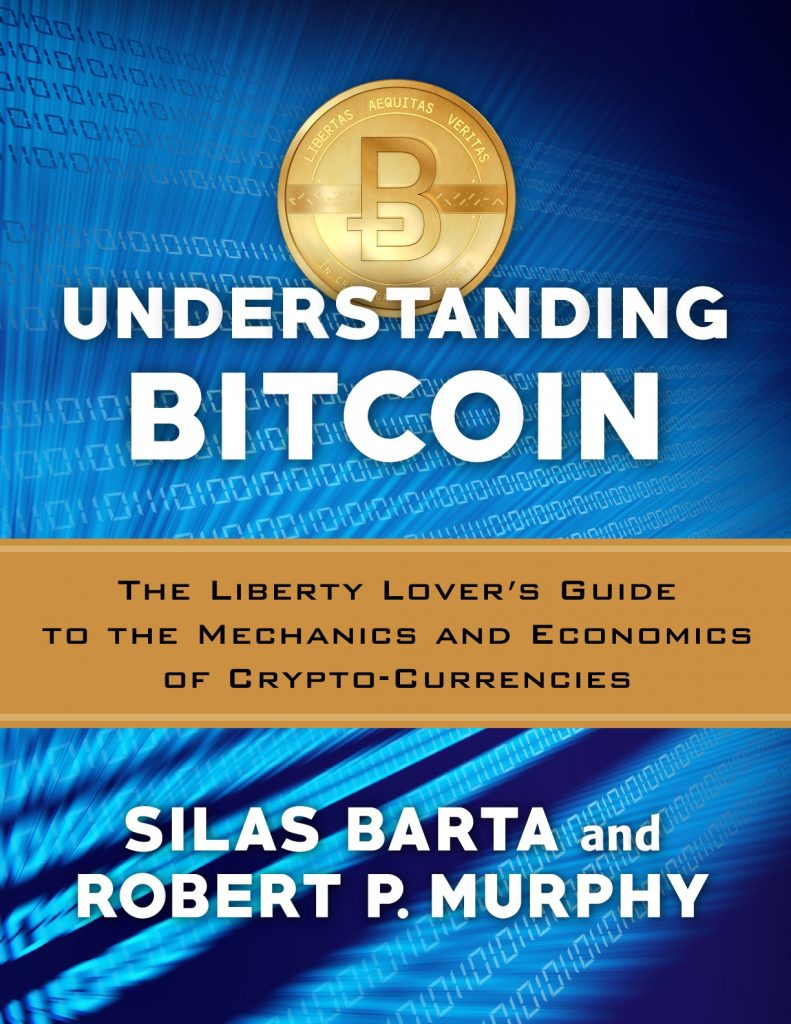Ep. 191 Clarifying the Economic Framework for Both Camps in the Bitcoin Debate

Bob helps to clarify the Bitcoin debate. On the one hand, the “no intrinsic value” skeptics are ignoring how Austrians deal with gold, while on the other hand, the “HODL forever” enthusiasts would never allow Bitcoin to become a money.
Mentioned in the Episode and Other Links of Interest:
- Bob (and Silas Barta’s) guide to Bitcoin.
- Bob’s book Contra Krugman.
- Help support the Bob Murphy Show.
The audio production for this episode was provided by Podsworth Media.

I feel like ANYTHING can be a fiat money. And bitcoin is a fiat money… it has a limited quantity until 51% of bitcoin holders vote to make more… Its a fiat money with rules of logic pre baked in. Literally anything can be fiat. Any thing.
A “fiat” by definition is a command or decree.
With government issued currency you are by law required to pay your tax in that currency, and it is regarded as final payment for any debts. For example, you may by contract require payment in gold or silver, but if you take that to court they will allow the debt to be paid in government issued currency. That’s the “fiat” part of it. What the currency is physically does not matter … but it requires a powerful entity to force people to accept one specific currency regardless of their individual preferences.
On the other hand, all cryptos are voluntary … you can decide which one you like, might not be Bitcoin, and you can choose for yourself how much or how little you want to get involved. There’s no fiat! It’s an accounting and payment system that can be verified, and if you find that useful you can accept it as money, but if you don’t like they way the do things then don’t.
As for expansion of Bitcoin to more coins based on voting … it’s happened already, with a “hard fork” in the blockchain you end up doubling the number of coins (one on one side of the fork, and the same coin on the other side of the fork). This is kind of the reverse of voting … more similar to secession really … in as much as the group splits and that point and any given miner can mine a block on one side of the fork, or the other side, but not both simultaneously. There is no known way to merge the fork back together again, and probably there never will be … thus over time the total number of crypto coins will increase as groups of users disagree over some detail and split up. This may be a good thing, it’s all based on personal choice and voluntary uptake.
I would like to speak on the show about bitcoin and economics in general. I’m a college student and don’t have much experience on podcasts however I would love to be on one. Would you have me?
I have a question. I think it should be simple to answer (but it’s more interesting if it isn’t), about the issue of the original exchange value, “how much it’s exchange value is”. If that’s a roadblock, don’t all entrepreneurs face the same problem when trying to set a price for a good or service they are intending to offer? For example, let’s say I want to sell a new product, the “novel widget”. How much should I charge? This is to mean, what’s the exchange ratio for “novel widgets”? There isn’t a previous price history I can base myself on. Entrepreneurs face this problem all the time, and they are able to work despite that. In essence, the issue is that with each new good or service (maybe even all new goods or services, i.e. “how much should the exchange ratio of a coke be when sold at this time and place, I don’t have a price history for this specific time and place”) there is a new exchange ratio to be set (or maybe discovered) and we’re essentially back to square one, because other price histories don’t help us much or at all.
I’m probably missing something important.
Interesting question. It seems to me that there are a couple of guideposts for entrepreneurs.
First, they could look at competing offerings; if you’re offering a new soda, then how much are people willing to pay for existing sodas or other beverages? When the first cell phone came in, entrepreneurs could look at what people would pay to have a car phone, etc.
Second, entrepreneurs have to consider input costs. He knows that he has to make a profit, so if the input costs for a new soda required a price of $100 per can, that would be so clearly above market that he’d have to go back to the drawing board.
Having read what people have commented here up till now, it suggests to me that the thing about “not having a previous price history” shouldn’t be a roadblock at all. At most a normal difficulty, the same that every entrepreneur faces when deciding how much to charge for any product or service. Nothing unsurmountable. Which I think is what happened with Bitcoin. It had no previous price history when it was created, but that wasn’t a big problem at all, because all goods, including monies, start up this way. Money is not special in this regard, I’m thinking. Seems to me like there is no real reason why it *needs* to have a previous price history to be created and start working.
I’ve always thought of the regression theorem as merely explaining how an economy moves from a barter system to one of indirect exchange. Once an economy has first used money, then changes in the form of money are not part of the theorem.
So we need the regression theorem to explain how we moved from a barter system to the use of gold, but not to explain how we transitioned from gold to USD and, if it were to happen, from USD to BTC.
You are referring to the free market origin of money. The Regression Theorem is the explanation of the present value of a currency. You trace it back until you reach the time in which it was a normal good exchanged in the market.
Dusan raises a great point. Price history is only a heuristic that helps everyone predict the future price of money or goods. The regression theorem seems more of a plausible explanation based on this heuristic than anything provable from first principles.
Given an entirely new category of good, the entrepreneur can make inferences based on cost of production and comparisons to other goods, but strictly speaking they must make a value judgement without the benefit of price history. This seems to suggest that there is another process for the zero to one jump required to value an entirely new thing.
Hi Dusan,
The monetary profit seeking entrepreneur (as distinct from the philanthropist) must set a minimum price above the cost of production.
Customers are willing to pay less than their subjective valuation of the good or service in question. Marketing may convince customer’s to increase their subjective valuations.
So for novel goods and services, the lower bound is known and the pool of potential customers shrinks as the asking price increases.
Finding a suitable price is the, sometimes difficult, task of the entrepreneur – and the reason why new ventures have a short life expectancy.
P.S. The final price is set by the customer, not by the cost of production. As without the customer there is no transaction and therefore no price at all, but the producer must set the minimum to remain in business.
A few random thoughts…
Borrowing is a pretty common practice to avoid selling assets (and paying the associated capital gains taxes). By keeping your income down, you could use your stimulus checks to pay the payments.
Gold gets HODL’d too. Probably the biggest HODLers are the central banks. When a central bank sells some gold, do they fill up a truck, haul it off and then setup at a gold auction like a food truck, or do they sell some sort of contract rights to the gold, which are basically just a fancy substitute for a loan that they then buy back later to regain ownership of gold that never left its vault?
I doubt bitcoin will become full blown M1-type money. My guess is that some percentage will continue to be used in that way, but that a large portion will be used as a layer that is basically HODL’d and backs other currencies and assets. Think securitized debts. Other cryptocurrencies are can be pegged to bitcoin, settle faster and allow for bitcoin to occasionally settle behind the scenes.
John Cochrane recently said this on Bitcoin from a Tyler Cowen interview:
“Here’s why I think Bitcoin eventually will die — because it is a pure fiat-unbacked money. It doesn’t have a government that can raise taxes to soak up the extra money if needed. It’s not a promise of anything real. It’s just a thing that’s in limited supply because in order to short it, you have to use up a lot of computer power, but you can create substitutes.
It’s classic. I’m very interested to watch the crypto community re-learn centuries of monetary economics. It’s classic MV = PY fiat money. It has value because it has a liquidity use. It’s useful for anonymous transactions, to put it politely, and it’s in limited supply because it takes money to make it.
But there’s nothing that stops you from making substitutes, and nothing that stops you from making derivative claims on Bitcoin that trade just like Bitcoin. So, if there’s nothing that stops you from making substitutes or derivative claims, eventually that value has to go to zero. That can take a long time.”
Is this sound economic reasoning?
Very interesting, can you give me a link and rough time stamp so I can listen to exactly what the context was?
You can see the transcript here
https://conversationswithtyler.com/episodes/john-cochrane/
Great, thanks.